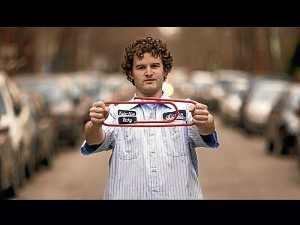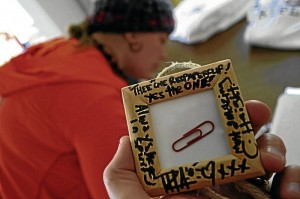 A miserable-looking beggar sidles up to you on a busy street pleading for a coin. What do you usually do in such an all-too-familiar situation? Let me guess.
A miserable-looking beggar sidles up to you on a busy street pleading for a coin. What do you usually do in such an all-too-familiar situation? Let me guess.If you had just attended Mass and are feeling pure and good inside, you and a few good coins would soon be parted.
(Alms-giving is a display of our altruism. Based on religious teachings, helping the least fortunate of our brethren makes us feel good about ourselves. Isn’t this one way of ensuring for oneself a nice, cozy place in the afterlife?)
But more often than not, a beggar would catch you at a bad time. That’s when you feel you’re not much better off than the starving vagabond facing you. Or that’s when you feel you’re just a few coins between you and total penury. In which case you either gruffly shoo or wave him away; or, as is the custom politely say, “patawad po” (sorry), depending on your mood or state of mind.
As for myself, I have three different sets of responses to the varying entreaties of beggars. (I’ve given it a bit of thought after countless brushes with these fast-multiplying denizens of our society’s underground.)
The kind of beggar I hate the most is the relatively healthy male young adult. The younger they come, the angrier I get. Perhaps it’s because they remind me of my own crucial struggles in my early manhood. But whatever the reason is, my temperature inexplicably rises whenever I meet this type.
My response would be something like this, which I usually say in Pilipino: “Why don’t you find some kind of work? Sell newspapers, cigarettes or something. Don’t beg. It’s so demeaning. Earn money from your sweat if you want to live. Are you not ashamed of what you are doing? Often, the message is delivered in two terse Pilipino sentence: “Hindi ka ba nahihiyang magpalimos? Magtrabaho ka!”
Sometimes I chide myself for being so blunt. But I can’t help it. Obviously, what those chaps lost was their self-esteem and, perhaps, the will to survive like other self-respecting human beings. Who knows what jolting effect the harsh but true words of a perfect stranger would have on them?
Generally speaking, I look at beggars (who convert city sidewalks into bedrooms after midnight), as well as the zombie-like representations of a wasted humanity hobbling their way from car to car at traffic stops—as this country’s collective failure. Each one of us must share the blame; there is no escaping it. Where has our society gone wrong?
How do I respond when they approach me with misery and hopelessness written in their faces? I simply look straight ahead and hope for the green light to replace the red before my compassion takes hold of me. In short, I generally avoid alms-giving. I believe it only reinforces their belief that without working, or by simply relying on the charitable nature of their fellowmen, they could do a good job of surviving. And so they get stuck in what they’re doing. It’s a kind of job that does not help the gross domestic product one bit.
I think it was in the Broadway musical hit, Jesus Christ Superstar, where Jesus was quoted as saying to Judas,
“Surely you’re not saying
we have the resources
to save the poor from their lot?!
There will be poor always,
pathetically struggling.
Look at the good things you’ve got!”
I figured that even if I were a multi-billionaire with millions allocated for alms-giving on a daily basis, I myself would become as poor as a sewer rat before long.
This is why, I am not in favor of the Conditional Cash-Transfer Program of the government. A number of congressmen discovered from their recent travels that the Mexican model after which our own CCT program is patterned has proven to be a constant headache for that country for the past 27 years. It had its initial successes, but its overall impact in poverty reduction has been minimal and certainly not worth the resources dedicated to it.
These congressmen, by the way, have recommended that the administration develop an “exit plan” while the getting out is good. The Department of Social Welfare and Development (DSWD), however, announced that the program—covering the next nine years (including four more of the succeeding administration)—would require an outlay of P306 billion. The bulk of the outlay would be coming from the government’s yearly budget, while the rest would have to be borrowed, thus increasing the nation’s already heavy debt burden.
Based on the government’s pronouncements on the issue, it looks like the DSWD is dead set on staying its course. It’s full speed ahead for the CCT program. This means the poorest of the poor would now have reason to celebrate with liquor that they can pay for with one of those plastic money being distributed by the DWSD.
A significant revelation made by DSWD Secretary Dinky Soliman is that the cost of administering the program over the next five years would not be less than P36 billion. Instead of continuing with this dole-out program, wouldn’t it make more sense to invest all those amounts mentioned in agriculture and education? Think of the equivalent food and school facilities such huge amounts could produce for the benefit of the poor.
Before winding this up, let me tell you about the third set of response I have reserved for the really needy, who are not technically classifiable as “beggars.”
These are the little tots not over 7 years old who are apparently required by their folks to brave the drizzle late at night and do their thing. It’s all the same everywhere in Metro Manila. They importune motorists into buying their sampaguita leis so, as they claim, they can put some food into their hungry mouths.
The lateness of the hour, plus the sight of their heads unprotected from the cold rain, are usually enough to melt your defenses even if you are philosophically against alms-giving. I’ve succumbed several times to this gimmick, I must confess. I’m just a big sucker, I guess.
But there was one time when I had just come from a birthday party somewhere along Mabini Street in Ermita. I had parked my vehicle somewhere and the drinking made it difficult for me to remember.
As I searched, I saw this pathetic portrait of a mother and her three young kids who had made a family bed of the sidewalk, with only discarded cardboards as mattresses. Mother and two sons, the youngest a nursing baby still, were sound asleep. How at peace they looked, momentarily oblivious of life’s cares.
But there was this young girl not more than 5 years old—apparently the eldest of the brood—who was wide awake and sitting up against the iron railing of a closed shop. As I passed, she just gazed at me, saying nothing but telling me volumes. It was enough to bring me on the verge of tears.
I summoned her and she obediently stood up. She had this glum, but disarming expression that only cute 5-year-old girls are capable. On my prodding, she recalled how they had been just ejected from their place because they couldn’t pay the rent for several months.
I asked her to wake up her mother who told me she washed clothes and earned barely enough for their food requirement. She broke down when she recalled how her good-for-nothing husband had abandoned the whole family for another woman. I asked if they could find another place to live in the following day if she had the money, and she said yes, but she said it would cost a lot—about P1,500 to cover four months’ rent.
To make the story short, I gave the little girl practically all the cash I was carrying, which was something like P2,600, leaving for myself a couple of hundreds.
As I handed over the money, I saw their faces light up—especially the little girl’s who just moments before looked so forlorn. They couldn’t believe that good luck would actually come in the middle of the night and wake them up to give the good news.
Seeing their grateful faces—especially the little girl’s—made be feel quite good. Despite the fact that a fool and his money had just parted, I inexplicably felt light-hearted afterward and I would remember again and again how that little girl who sat forlornly and wide awake on the sidewalk brightened up like a Christmas tree.
That, by the way, was my one and only (and highly personal) Conditional Cash-Transfer Program. But I believed the recipients were highly deserving. What’s more, it did not entail any administrative cost.
But the satisfaction—call it psychic income or whatever—was incalculably precious.
No administrative cost on my part; and the psychic income was incalculably precious.








